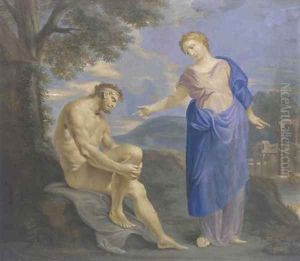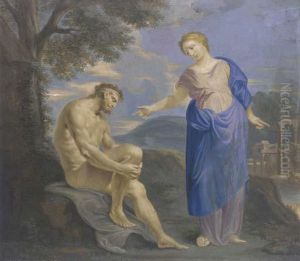Catherina Da Costa Paintings
Catherina Da Costa (also known as Catherine da Costa) was a Jewish-Portuguese artist born in London in the late 17th century. While specific details about her early life are relatively scarce, it is known that she came from a notable family of Sephardic Jews who had settled in England after fleeing the Inquisition in the Iberian Peninsula. Her father, Dr. Fernando Mendes, was the physician-in-chief to Catherine of Braganza, the queen consort of King Charles II of England.
Catherina Da Costa is primarily recognized for her work as a wax modeller, a form of artistic expression that was particularly popular in the 17th and 18th centuries. Wax modelling was considered an appropriate artistic medium for women during this period, as it was associated with domestic crafts and was not subject to the same professional restrictions as painting or sculpture.
Despite the limitations placed on women in the arts during the early modern period, Da Costa achieved a degree of fame for her delicate and detailed wax portraits. Her works often depicted figures from the Bible and classical mythology, as well as contemporary likenesses. However, much of her work has not survived, and her legacy is largely reconstructed from written accounts and the few pieces that remain.
Catherina Da Costa's contributions to art history are particularly noteworthy not only because of her skills as an artist but also because of her identity as a woman of Jewish heritage in a predominantly Christian society. Her achievements are a testament to her personal talent and the complex cultural exchanges that characterized the early modern period in Europe.
She died in 1756, and while her work is not widely known today, Catherina Da Costa remains an intriguing figure in the history of art, reflective of the broader narratives of the Sephardic diaspora, the role of women in the arts, and the artistic practices of her time.

